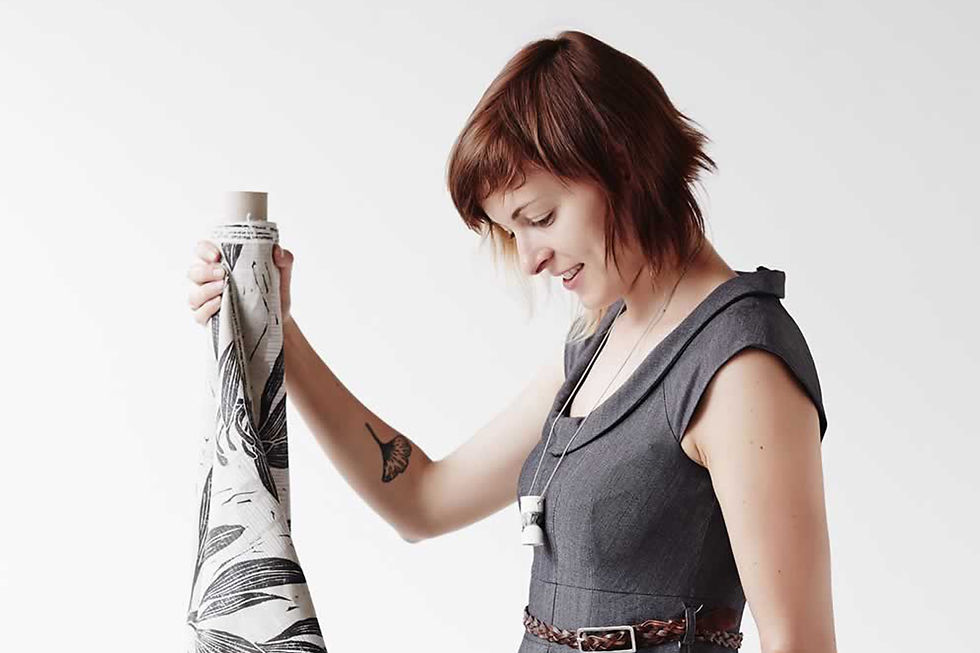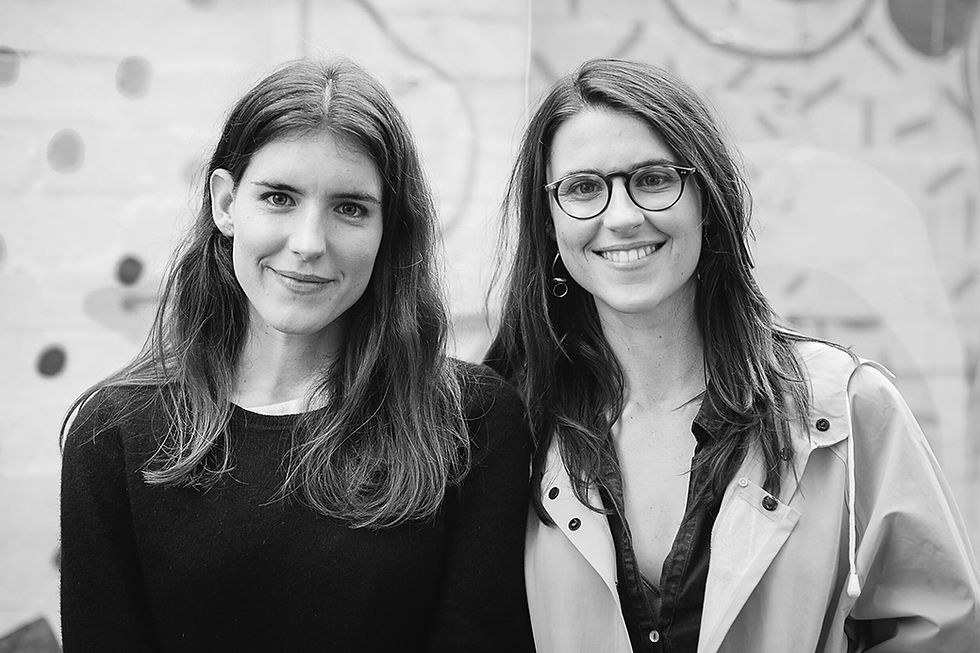Meet Melbourne's Design Leaders in Sustainability
- Andrew Mitchell

- Oct 12, 2019
- 4 min read
Updated: May 1, 2024
Sustainability – it’s long been a buzzword in the design industry and for good reason. As design professionals across the globe adopt a strong sustainability ethos, we are seeing benefits that go beyond the environmental. We spoke to three Melbourne designers whose focus on sustainability is infusing their work with a unique blend of beauty, story and soul.
Lara Cameron, Ink & Spindle
Inspired by the Australian landscape, Lara and her business partner, Caitlin Klooger design an exquisite range of textiles that have minimal impact on the earth. Produced via screen and hand printing at Ink a Spindle’s Abbotsford studio, the prints are transformed into soft furnishings and apparel by independent artisans.

“I have always been drawn to beautiful prints as well as the tactile nature and imperfections of hand-printed fabrics.”
From an early age, I used to commandeer my mother's sewing machine even though I barely knew how to work it. I’m drawn to fibres such as linen and hemp because they are hard wearing and truly biodegradable.

“The cloths we print on have a beautiful tactile quality, they even smell amazing.”
Our freshly printed linens smell like dry grass or hay. When put to use, our fabrics wear beautifully, wash well and develop a subtle patina. As with any hand-printed product there are always subtle imperfections which give life to the fabrics. We design our prints with this in mind so that any imperfections enhance rather than detract from the overall appearance.

“As a design professional, it's your obligation to think about the longevity and lifecycle of the products you are specifying.”
Consider the health of your client’s home and how enclosed spaces can increase the negative impacts of toxic chemicals used in furnishings. We need to support our local economy so that businesses such as ours can compete against the big players. Our clients love that our fabrics tell a story and they can have a personal connection with the makers.
Sam and Karina Seljak, Seljak Brand
Founded by sisters Sam and Karina, Seljak Brand produces a luxurious range of wool blankets out of factory floor offcuts. The sisters are driven to make and use beautiful things that are regenerative by design and collaborate with mills in Tasmania and Lithuania.

“When we started out, we asked ourselves, how can we make the world better, not worse, through the way we design and manufacture products?”
We researched the circular economy which rejects the take-make-waste linear model and embraces circular systems whereby resources are used again and again. We also spent three months in India visiting textiles social enterprises to understand artisanal manufacturing.

“We love that the rainbow speckles of our blankets reflect the nature of using recycled materials.”
Each new blanket is a depiction of the production runs before it as it's made up of offcuts. We were taught by our mother and grandmother, that quality not quantity is key. We also learned that wool is an incredible natural, renewable resource that keeps you warm when wet, is self-cleaning and lasts a lifetime if you care for it.

“Designing for sustainability is an excellent design challenge.”
Ask yourself, how can I make and use things that won't negatively affect people and the planet? We can all do our part to reduce pressure on our Earth's finite resources and take responsibility to find end of life solutions while designing and specifying beautiful products.
James Goodlet, Altereco Design
James founded Altereco Design in 2006, a boutique design practice creating beautiful homes in Victoria. Sustainable, natural materials are a core part of Altereco’s ethos and James has recently become a Passive House Certified designer.

“Using products and materials that can be reused, recycled or upcycled helps us create unique and creative homes.”
Our clients are open to some creativity and looking for a unique result in their home rather than getting an off-the-shelf product.

“If you are sourcing new products, it’s good to understand where they came from and how they arrived at your site.”
Sustainability is about more than the end product, it’s about the whole process. It can get tricky going into the detail of things like carbon mileage but it’s an important part of design sustainability.

“Designers need to get excited about reducing their carbon footprint and the first step is reducing the focus on scale.” Make sure the building isn't any bigger than it actually needs to be because the bigger it is, the more products it needs and the more it costs to run. Then ask, what are the systems that we're running it on - can we go all electric and can we generate power from photovoltaics? Get your clients excited about living sustainably.
Huge thanks to these three inspirational designers for sharing their insights into the little known, but incredibly current topic of sustainability.
If you’re keen to find out more about how beautiful and inspiring sustainable design can be, keep an eye out for our upcoming Seminar Session on Sustainability.
COMING SOON: Seminar Series: Sustainability for Designers.
Details
SEMINAR SERIES: SUSTAINABILITY FOR DESIGNERS
DATE: Thursday 12th December 2019
TIME: 5.00pm - 7.00pm




Comments